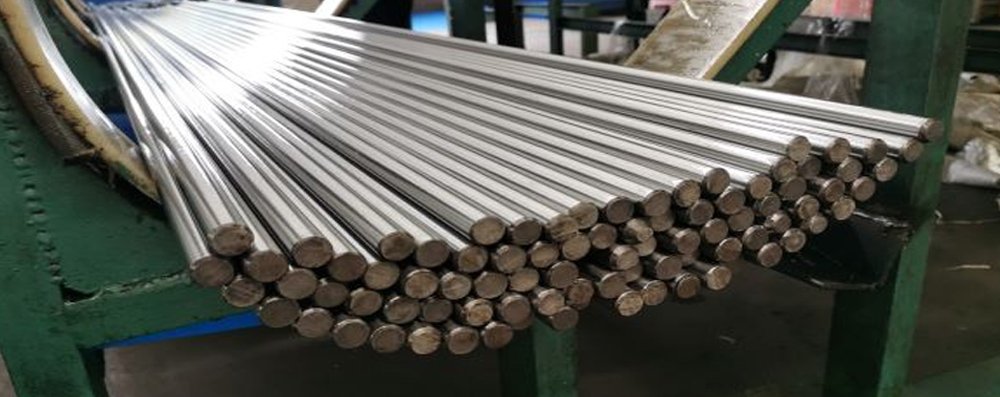Introduction
M2 High-Speed Steel (HSS) is a tungsten–molybdenum high-speed tool steel known for its outstanding balance of toughness, wear resistance, and red hardness. M2 remains one of the most commonly used high-speed steels globally due to its versatility across different cutting and tooling applications. It offers superior hardness retention at elevated temperatures, making it ideal for high-performance machining tools and industrial wear parts.
M2 is supplied in annealed, hardened, or tempered conditions depending on application requirements. It is renowned for its ability to withstand heavy mechanical stresses, maintain sharp cutting edges, and provide excellent service life even under extreme conditions.
Properties of M2 Grade
- High Red Hardness: Maintains cutting edge sharpness at elevated temperatures.
- Excellent Wear Resistance: Outstanding resistance to abrasion and surface wear.
- Superior Toughness: Compared to older high-speed steel grades like T1.
- Good Machinability: Relative to other HSS grades.
- Outstanding Hardness: Up to 65–67 HRC after heat treatment.
- Excellent Heat Treat Response: Uniform hardness and toughness achieved during heat treatments.
Uses/Applications:
M2 high-speed steel is used widely across industries, including:
Cutting Tools:
- Drills
- Taps
- Milling cutters
- Reamers
- Saw blades
- Broaches
Cold Work Tooling:
- Punches
- Dies
- Thread rolling dies
Plastic Molds: When high wear resistance is needed.
Automotive and Aerospace Components: Specialized wear-resistant parts.
Precision Engineering Applications: Requiring edge retention and dimensional stability.
Heat Treatment:
M2 responds excellently to heat treatment:
Annealing:
- Heat to 850°C–900°C.
- Hold for several hours.
- Cool very slowly (furnace cooling).
- Hardness after annealing: Max 248 HBW.
Hardening:
- Preheat in two steps: first at 450°C–500°C, then 850°C–900°C.
- Austenitize at 1200°C–1250°C.
- Quench in warm oil, salt bath, or air.
Tempering:
- Temper immediately after hardening.
- Typically tempered at 540°C–560°C.
- Double tempering is recommended for optimal toughness.
Final hardness after tempering ranges between 62–67 HRC.
Chemical Composition:
| Element | Content (%) |
| Carbon (C) | 0.78 – 0.88 |
| Manganese (Mn) | 0.15 – 0.40 |
| Silicon (Si) | 0.20 – 0.45 |
| Chromium (Cr) | 3.75 – 4.50 |
| Tungsten (W) | 5.50 – 6.75 |
| Molybdenum (Mo) | 4.50 – 5.50 |
| Vanadium (V) | 1.75 – 2.20 |
| Sulfur (S) | ≤ 0.03 |
| Phosphorus (P) | ≤ 0.03 |
Mechanical Properties:
| Property | Typical Value |
| Hardness (after heat treatment) | 62 – 67 HRC |
| Tensile Strength (annealed) | ~880 MPa |
| Yield Strength (annealed) | ~685 MPa |
| Elongation at Break | ~20% |
| Impact Toughness | Moderate to Good |
Note: Properties vary based on specific heat treatment conditions.
The unique combination of high tungsten, molybdenum, and vanadium contents gives M2 its outstanding hardness and wear resistance.
Physical Properties:
| Property | Typical Value |
| Density | 8.12 g/cm³ |
| Modulus of Elasticity (E) | 210 GPa |
| Thermal Conductivity | 25 W/m·K at 20°C |
| Coefficient of Thermal Expansion | 11.4 × 10⁻⁶ /°C (20–100°C) |
| Specific Heat Capacity | 460 J/kg·K |
M2 offers sufficient thermal conductivity to avoid localized heating during machining operations.
Forging:
Forging Temperature Range: 950°C to 1150°C.
Procedure:
- Heat slowly and uniformly.
- Forge in small reductions to avoid internal stress.
- Do not forge below 950°C.
- Allow the material to cool slowly in lime, mica, or ashes.
Post-forging annealing is recommended to soften the structure for further processing.
Dimensional Tolerances:
Bright Bars:
- Diameter tolerance: h9/h11 based on customer requirement.
Forged and Rolled Bars:
- General industry standards or customized tolerances.
Precision Ground Bars:
- Tight tolerances suitable for critical tooling applications.
Proper size control ensures excellent fitting in high-precision tooling.
Machinability:
Relative Machinability: Approximately 50% compared to free-cutting carbon steels.
Machining Recommendations:
- Use rigid tooling and fixtures.
- Prefer carbide-tipped or high-performance HSS cutting tools.
- Adequate cooling is necessary to avoid workpiece overheating.
Characteristics:
- Chips are short and manageable.
- Machining should be performed in annealed condition.
Weldability:
M2 has limited weldability.
Special precautions are required:
- Preheat to 300–400°C.
- Use proper filler material.
- Post-weld heat treatment (annealing) is essential to restore mechanical properties.
Corrosion Resistance:
- M2 is not corrosion resistant.
- Exposure to moisture, acids, and industrial atmospheres can cause rust.
- Protective coatings (e.g., nitriding, PVD coatings) can enhance corrosion resistance for some applications.
Welding is generally avoided unless absolutely necessary due to risk of cracking and toughness loss.
Available Form:
M2 High-Speed Steel is available in various forms:
- Bright Round Bars
- Forged Bars
- Flat Bars
- Sheets and Plates
- Precision Ground Rods
- Cut-to-size Blocks
M2 has limited weldability.
Special precautions are required:
- Preheat to 300–400°C.
- Use proper filler material.
- Post-weld heat treatment (annealing) is essential to restore mechanical properties.
Welding is generally avoided unless absolutely necessary due to risk of cracking and toughness loss.
Conclusion:
M2 High-Speed Steel remains a gold standard material for cutting and tooling industries. With a remarkable blend of high wear resistance, outstanding red hardness, and good toughness, M2 continues to be a reliable choice for precision tools operating under extreme working conditions. When treated and machined properly, M2 delivers long service life, high production efficiency, and minimal maintenance costs. Whether in high-speed cutting tools or in rugged industrial dies, M2 remains a proven and trusted material solution.
Related Products : D2, DB6, DIN 1.2714, DIN 1.2080, DIN 1.2379, DIN 1.2343, DIN 1.2344, EN31, H11, H13, OHNS, HCHCR, M2, P20+S, P20, P20+Ni, K310, Maps


